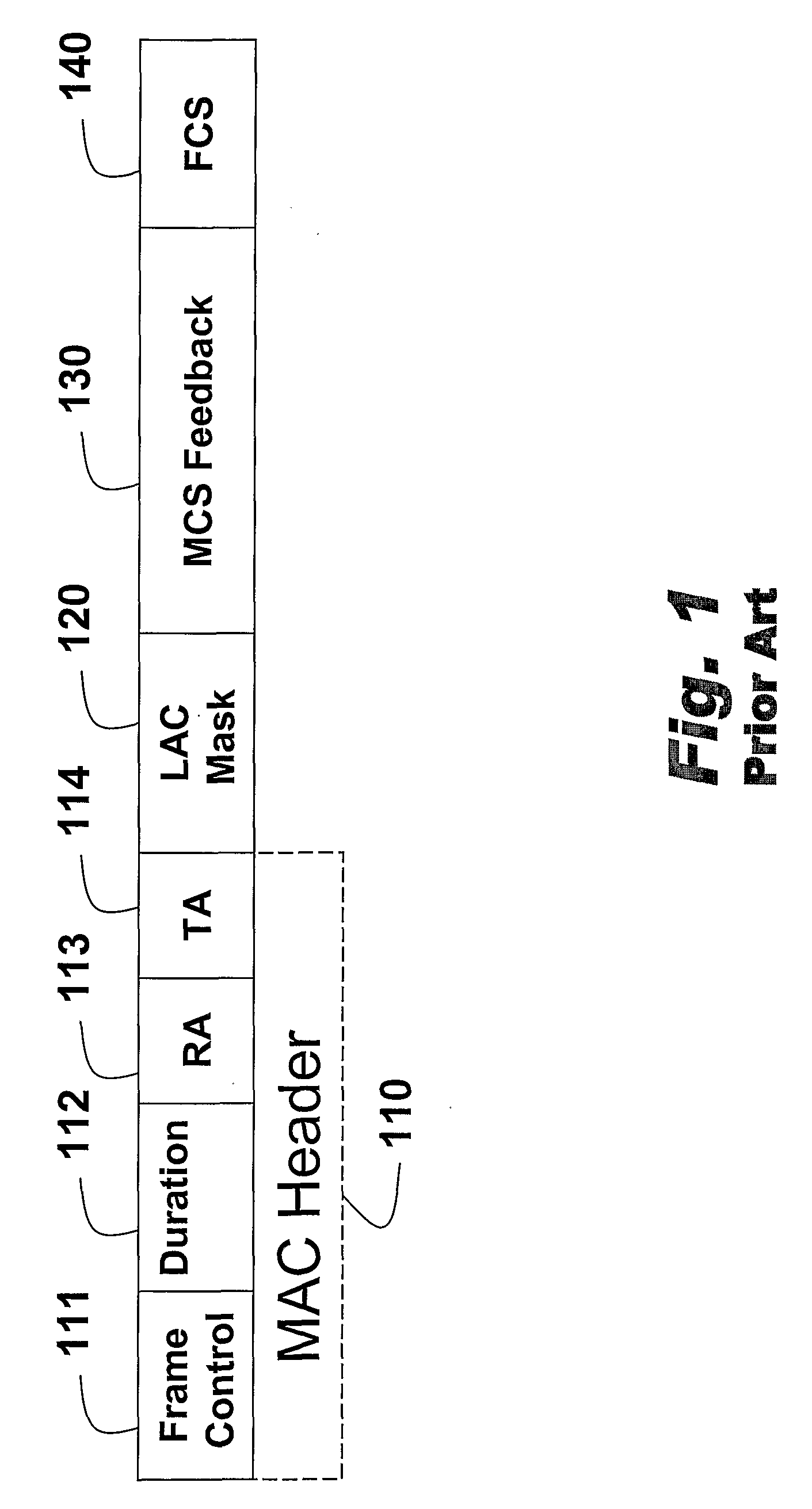Training Signals for Selecting Antennas and Beams in Mimo Wireless Lans
a wireless lan and training signal technology, applied in the field of multi-input, multi-output wireless local area networks, can solve the problems of increasing the complexity and cost of hardware use, increasing the processing complexity of the baseband with the number of antennas, and undesirable additional overheads, so as to achieve less overhead and improve performan
- Summary
- Abstract
- Description
- Claims
- Application Information
AI Technical Summary
Benefits of technology
Problems solved by technology
Method used
Image
Examples
Embodiment Construction
[0036]FIG. 5A shows a multiple-input, multiple-output (MIMO) wireless local area network (WLAN) 100 according to an embodiment of the invention. The network includes a first station (STA A) 510 and a second station (STA B) 520. Either station can operate in receive or transmit mode. Generally, the station that transmits the data is called the transmit station, and the station that receives the data is called the receive station.
[0037]A ‘set’ as defined includes one or more elements; the number of elements in a ‘subset’ is equal to or less than the number of elements in the corresponding set.
[0038]Each station includes a set of receive (Rx) RF chains 501 and a set of transmit (Tx) RF chains 502 connected to a set of antennas 503 by switches 530. Generally, the number of antennas is larger than the number of RF chains. Therefore, a subset of antennas is selected from the set of total available antennas by a method 540 according to an embodiment of the invention during a training phase...
PUM
 Login to View More
Login to View More Abstract
Description
Claims
Application Information
 Login to View More
Login to View More - R&D
- Intellectual Property
- Life Sciences
- Materials
- Tech Scout
- Unparalleled Data Quality
- Higher Quality Content
- 60% Fewer Hallucinations
Browse by: Latest US Patents, China's latest patents, Technical Efficacy Thesaurus, Application Domain, Technology Topic, Popular Technical Reports.
© 2025 PatSnap. All rights reserved.Legal|Privacy policy|Modern Slavery Act Transparency Statement|Sitemap|About US| Contact US: help@patsnap.com



